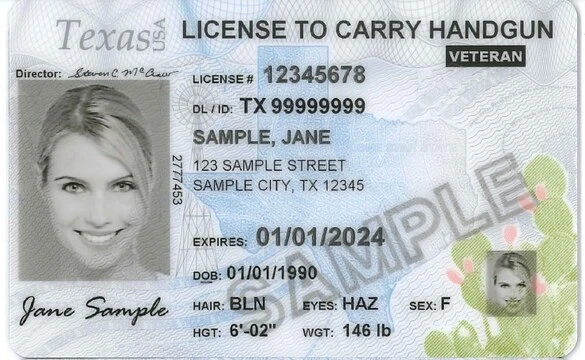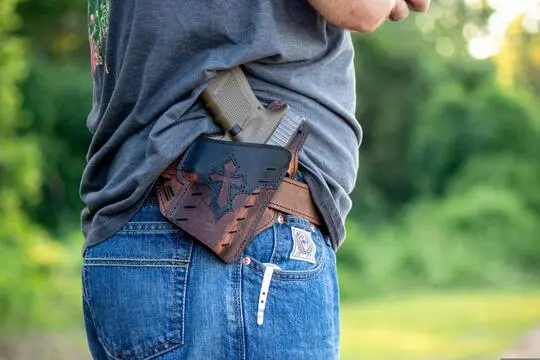Firearm safety is paramount for all gun owners, regardless of experience level. Adhering to established safety rules can prevent accidents, injuries, and fatalities. This document synthesizes and integrates the firearm safety rules from four leading organizations—the NRA (National Rifle Association), NSSF (National Shooting Sports Foundation), A Girl & A Gun, and US Navy. By understanding and following these comprehensive guidelines, gun owners can ensure safe and responsible firearm handling.
Why These Organizations?
Each organization included in this synthesis was chosen for its unique perspective and expertise in firearm safety:
- NRA (National Rifle Association): As the leading authority on firearms training and education, the NRA is a natural choice. Carry Texas instructors carry NRA certifications, making it our home base for safety guidelines and best practices.
- NSSF (National Shooting Sports Foundation): NSSF provides an alternative set of rules from a contemporary in the firearms education niche, offering valuable insights and practices for safe gun handling.
- US Navy: Including the US Navy demonstrates how our government approaches firearm safety. Their rigorous standards and training provide a comprehensive view of firearm handling in a highly disciplined environment.
- A Girl & A Gun: This organization is a favorite for its focus on female empowerment and safety in firearm handling. Their rules emphasize practical and accessible safety measures for women gun owners.
Fundamental Rules of Firearm Safety
The NRA emphasizes three fundamental gun safety rules, often presented to students as "always, always, always," referring to the first word in each rule. These rules form the foundation for safe gun handling and are echoed in various forms by other organizations.
NRA's Primary Gun Safety Rules
- Always Keep The Gun Pointed In A Safe Direction: Ensuring the muzzle of your firearm is always directed in a safe direction prevents unintended damage or injury. By doing this, even if an accidental discharge occurs, the risk to people and property is minimized.
- Always Keep Your Finger Off The Trigger Until Ready To Shoot: Keeping your finger off the trigger until you're ready to shoot helps prevent accidental discharges. This practice ensures that your firearm only discharges when you intend it to, enhancing safety for everyone around you.
- Always Keep The Gun Unloaded Until Ready To Use: Keeping your firearm unloaded until you are ready to use it greatly reduces the risk of accidental discharge. This rule ensures that your firearm is safe during storage and handling, providing peace of mind to you and those around you.
Comparison with Other Organizations' Gun Safety Rules
National Shooting Sports Foundation (NSSF)
- Always Keep the Muzzle Pointed in a Safe Direction: Similar to the NRA's first rule, this emphasizes the importance of controlling the direction of the muzzle at all times.
- Firearms Should Be Unloaded When Not in Use: Aligns with the NRA's third rule, stressing the importance of keeping firearms unloaded until they are ready to be used.
- Don’t Rely on Your Gun’s “Safety”: Highlights that mechanical safeties can fail and should not be solely relied upon.
- Be Sure of Your Target and What’s Beyond It: Ensures that shooters are aware of their target and the environment beyond it to prevent unintended damage.
- Use Correct Ammunition: Emphasizes the importance of using the appropriate ammunition for your firearm.
- If Your Gun Fails to Fire When the Trigger is Pulled, Handle with Care!: Provides guidance on what to do if a gun misfires.
- Always Wear Eye and Ear Protection When Shooting: Stresses the importance of protective gear.
- Be Sure the Barrel is Clear of Obstructions Before Shooting: Ensures the barrel is free from obstructions to prevent accidents.
- Don’t Alter or Modify Your Gun, and Have Guns Serviced Regularly: Advises against unauthorized modifications and stresses regular maintenance.
- Learn the Mechanical and Handling Characteristics of the Firearm You are Using: Encourages thorough knowledge of the specific firearm being used.
A Girl & A Gun
- Treat All Guns as if They Are Always Loaded: Equivalent to the NRA's rule about treating every weapon as if it were loaded.
- Never Let the Muzzle Cover Anything You Are Not Willing to Destroy: Corresponds with the NRA's rule on pointing the gun in a safe direction.
- Keep Your Finger Off the Trigger Until Your Sights Are on Target and You Have Made the Decision to Shoot: Matches the NRA's rule on trigger discipline.
- Be Sure of Your Target and What Lies Beyond It: Similar to the NSSF's rule, emphasizing situational awareness.
- Always Secure Your Firearm from Unauthorized Persons: Additional rule emphasizing the importance of securing firearms.
US Navy
- Treat Every Weapon as if It Were Loaded: Aligns with the NRA and A Girl & A Gun's rule on treating every gun as loaded.
- Never Point a Weapon at Anything You Don’t Intend to Shoot: Matches the NRA and NSSF's rule on muzzle direction.
- Keep Your Trigger Finger Straight and Off the Trigger: Corresponds with the NRA and A Girl & A Gun's rule on trigger discipline.
- Keep Your Weapon on Safe Until You Intend to Fire: Emphasizes the use of safety features, aligning with the NSSF's rule on not relying solely on the mechanical safety.
Detailed Comparison and Synthesis of Gun Safety Rules
Using the NRA rules as a standard, we can easily illustrate that all of the other organizations have similar rules. Not going so far as to say they're all the same, but that they all have similar goals.
Rule 1: Always Keep The Gun Pointed In A Safe Direction
- NRA: Always Keep The Gun Pointed In A Safe Direction
- NSSF: Always Keep the Muzzle Pointed in a Safe Direction
- A Girl & A Gun: Never Let the Muzzle Cover Anything You Are Not Willing to Destroy
- US Navy: Never Point a Weapon at Anything You Don’t Intend to Shoot
These rules emphasize the critical importance of controlling the direction of the firearm’s muzzle at all times to prevent accidents.
Rule 2: Always Keep Your Finger Off The Trigger Until Ready To Shoot
- NRA: Always Keep Your Finger Off The Trigger Until Ready To Shoot
- NSSF: Don’t Rely on Your Gun’s “Safety”
- A Girl & A Gun: Keep Your Finger Off the Trigger Until Your Sights Are on Target and You Have Made the Decision to Shoot
- US Navy: Keep Your Trigger Finger Straight and Off the Trigger
Trigger discipline is essential to prevent accidental discharge, and all organizations stress the importance of keeping the trigger finger off the trigger until ready to fire.
Rule 3: Always Keep The Gun Unloaded Until Ready To Use
- NRA: Always Keep The Gun Unloaded Until Ready To Use
- NSSF: Firearms Should Be Unloaded When Not in Use
- US Navy: Treat Every Weapon as if It Were Loaded
Keeping firearms unloaded until ready for use is a crucial safety measure to prevent accidental discharges.
Additional Safety Tips and Guidelines
Safe Storage of Firearms
- Store guns so they are not accessible to unauthorized persons. This includes children, guests, and potential intruders.
- Use gun safes or locking devices to secure firearms when not in use.
Proper Maintenance and Handling of Firearms
- Regular cleaning and proper maintenance are essential for safe and reliable firearm operation.
- Before cleaning, ensure the gun is unloaded and the action is open.
Importance of Using Correct Ammunition
- Only use ammunition that matches the specifications of your firearm.
- Improper ammunition can cause malfunctions and potentially dangerous situations.
Situational Awareness and Environmental Considerations
- Always be aware of your surroundings and the environment where you are handling or shooting a firearm.
- Ensure there are no people or objects that could be unintentionally harmed by your actions.
Resources and Further Reading on Gun Safety Rules
- NRA: NRA Firearm Training
- NSSF: NSSF Safety Resources
- A Girl & A Gun: A Girl & A Gun Training
- US Navy: US Navy Firearm Safety
Call-to-Action
- Enroll in Firearm Safety Courses: Contact local training programs to improve your firearm handling skills.
- Join Firearm Safety Organizations: Stay updated with the latest safety practices by joining organizations like the NRA, NSSF, or A Girl & A Gun.
Conclusion
Adhering to gun safety rules is a responsibility all gun owners must take seriously. By integrating the guidelines from the NRA, NSSF, A Girl & A Gun, and US Navy, this document provides a comprehensive overview of essential safety practices. Stay informed, practice these rules consistently, and ensure the safety of yourself and those around you. Firearm safety is not just a set of rules but a commitment to responsible gun ownership.




